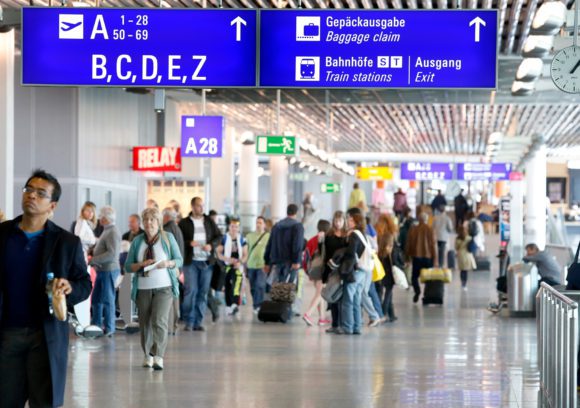
IMG 1941
Emirates can fully agree with the decision of the United Arab of Emirates (UAE)-government not to invest for now in the expansion of Dubai World Central. Actually, the airline’s role in advising the government against spending billions on the airport has been instrumental, president Sir Tim Clark said during a media roundtable in London on September 4.
As Emirates was growing exponentially fast from the mid-2000s onwards and Dubai International Airport (DXB) looked like running out of capacity, the government announced a $36 billion plan to develop Al Maktoum-airport into the world’s biggest airport from around 2020. DWC would be able to cater for 200-240 million passengers a year, using five runways and a lay-out of six satellite terminals with space for 200 Airbus A380s.
During the 2017 Dubai Air Show the plans were already most uncertain and by late 2018 the government halted investment plans, a decision that has got renewed media-attention in recent weeks. For now, this leaves DWC as the satellite airport to DXB that as recently as in 2018 was upgraded to 30 million passengers a year.
“We have set down and tried to establish, given all the trading conditions that we have, plus the close integration of flydubai into our operations, if we could extract more value of the existing airports and a less-demanding capital spend on the government? The answer is: yes, we believe we can”, says Clark. “We believe we can get DXB up to 115-120 million passengers a year up from 88 now. And DWC, although not served by many passengers and airlines, has a capacity of 30 million. So if you take the two airports together, you get a capacity pushing 150 million.”
“Secondly: does DWC have to be so smart, isn’t it too expensive, what are the true costs, when will it be ready? My view is also that the design as it was in my humble opinion didn’t apply technologies to the level they need to been applied now in airport design and passenger flow. The passenger processes of the second half of the 2020s will be a completely different beast to what you see today”, says Clark.
Biometrics will take over
The Emirates President gives a few examples: “Biometrics will control all access. A lot of functions that we can do at the airport will be off-site. You will not have check-in, you will not have a central search, you will not have immigration. You will be able to walk in into this wonderful mall, around of which there will be some airplanes parked. But don’t forget: every step on your way, you are watched. We have all issues about privacy and data collection and they have to be dealt with, but what you are carrying in your bag will tell exactly who to pull out.”
“Imagine you are coming curb-side. I am checked-in, they know me. In fact, at home, the baggage label has been picked up, printed and stuck on. Boarding cards will be gone, passports will be gone, they are an anachronism. Why you need it if all the biometrics are there? Elapsed time from curbside to boarding is compressed, but dwell-time in the mall will go up by at least 50 percent. You get to the boarding gate, but there are no people there. You have machines doing it for you, they recognize you by facial recognition. In this scenario, I am removing thousands of people. My estimate for the check-in at DWC was 2.500 on shift.”
“Going back to DWC, it means that the passenger processors will become much smaller. So was the government in this case being committed to a high level of expenditure on a design that perhaps was not right? I personally have my doubts and I am not alone, listening to what others have said. I know this: this airport was not ready before the back-end of the next decade or early thirties. Perhaps a review really needs to take place now as to how it should look like so that they don’t build an airport that is Jurassic when they finish it. We think we can do better.”
Clark says the current DWC will expand and grow in the next decade as DXB nears its limits, with Emirates eventually moving to Dubai World. “We could eke this out probably ten years.”
Views: 4



